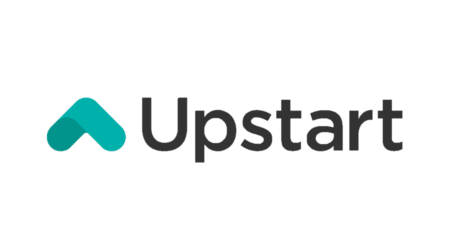As if having a child isn’t stressful enough, there’s the fact that paid maternity leave isn’t a given in the US. According to a 2016 Bureau of Labor Statistics study, only 13% of Americans working in the private sector have access to paid family leave.
If you’re among them, a personal loan might help you offset some of the costs of taking time off to care for your new baby, allowing you the breathing room to enjoy your new life as a parent. You may want to look into other ways to save as well, such as deferring your student loan payments or government assistance.
How a personal loan can help during unpaid maternity leave
A personal loan can help make up for lost income when you’re ready to take unpaid maternity leave. You have two options to consider: term loans and lines of credit.
Term loans
Term loans offer lump sums of cash that you repay over a specified period in fixed installments that often include interest and fees. Typical term loans allow you to borrow from $1,000 to $100,000, depending on your income, credit score, debts and other factors.
A term loan could be an option if you’re looking to borrow just enough funds to cover living expenses or make up for your lost salary. Your first payment is often required 45 days after you receive your lump sum.
A solid budget that factors in your repayments can help you take care of your little one without worry of default.
Lines of credit
A personal credit line is similar to a credit card. You get access to an approved amount of funds that you can draw from as you need, typically from $2,000 to $100,000. You repay only what you borrow plus interest and fees through minimum monthly payments or a schedule like that of a term loan.
If you own a home, you can consider a home equity line of credit backed by your mortgage. HELOCs typically give you access to higher amounts and lower rates than an unsecured credit line.
Opening a line of credit is good when preparing for unexpected expenses. It can help cover hospital costs if you experience complications or your baby needs extra care. But it’s a double-edged sword: You might end up spending more than living on a fixed budget and could potentially have trouble with repayments when you’re not bringing in income.
How personal loans and lines of credit compareCompetitive loan rates for all credit types
Compare personal lending products to fit any credit level from poor to excellent.
When should I take out a loan?
If you’re anticipating maternity leave, it’s a good idea to apply for a personal loan before you leave your job. Loan approval can be difficult if you can’t prove a steady income. And if you are approved without income, you likely won’t qualify for the most competitive rates.
Applying early also means you’ll have the funds on hand for unexpected medical emergencies if you experience complications or your baby arrives early. Premature babies often mean large hospital bills, which you might have trouble paying while you recover.
I’m on maternity leave and need more money. What do I do?
If student debt is a part of your monthly costs, you may be able to defer that while you focus on covering expenses for your newborn. Federal loans disbursed before July 1, 1993 are eligible for parental leave deferment. You can fill out a parental leave deferment request form.
Otherwise, look into applying for forbearance to temporarily reduce your monthly repayments, if it’s an option. If you have federal loans, consider switching to a graduated or income-based repayment plan to reduce your monthly repayments indefinitely.
Another option is government assistance. You might benefit from temporary assistance programs like the SNAP, which you can use like cash to purchase food. New York, New Jersey, Rhode Island, Hawaii and California also offer temporary disability programs that cover maternity leave. Check with your local government for details.
How much should I budget for new baby costs?
Costs vary widely depending on where you live, your family’s needs and your overall priorities. When budgeting for your baby’s care, keep in mind the items and services you’ll need after bringing home your bundle of joy:
- One-time costs. Around $4,500 for a crib, baby carrier, car seat, stroller, feeding gear and other essentials
- Day care. Up to $2,250 a month
- Nanny. $2,000 to $3,000 a month
- Babysitter. $50 per month and more, as needed
- Disposable diapers. Around $72 a month
- Baby wipes. $20 a month
- Formula. Around $150 a month
- Clothing. Around $60 a month
- Toys and books. Around $40 a month
- Medical expenses. Around $23 a month
- Toiletries. Around $21 a month
The first year of caring for and raising a child can easily cost $20,000 or more — on top of your regular personal expenses.
How much will a personal loan cost?
When considering a personal loan for maternity leave, you have two main costs to think about: interest and fees.
Interest
Interest rates on unsecured term loans and lines of credit tend to range from 4% to 36%. Term loans typically come with fixed rates that stay the same over the life of your loan. Lines of credit come with either fixed or variable rates.
Because you won’t have regular money coming in during your time off, you might want to look into longer terms for more manageable repayments, depending on your budget. Shorter loan terms can help you save on interest in the long run — after all, there’s less time for interest to pile up — but you’ll have higher monthly repayments, which might be difficult to afford.
Fees
You might pay an origination fee when you get a term loan, which your lender typically deducts from your approved funding amount before you receive it. Origination fees typically range from 1% to 5% of the loan amount. Lines of credit can also come with monthly or annual service fees, as well as a fee each time you make a withdrawal — similar to an origination fee.
Some lenders charge fees for paying off your loan early, meaning you won’t save much on interest — if at all. However, you can find lenders offering no-fee personal loans, especially if you have good or excellent credit.
Case study: Amanda figures out her finances after having a baby
Amanda learned that her company offered five months of unpaid maternity leave. She and her partner could afford to set aside $300 a month, allowing them to save a total $2,700 after a nine-month pregnancy. Amanda also took out a short-term disability policy, which paid out two-thirds of her typical monthly take-home salary of $3,000 — or $2,000 per month for the first eight weeks.
To prepare for the extra and unexpected costs, Amanda applied for preapproval on a $20,000 unsecured term loan from three online lenders.
| Lender | Term | APR offered | Est. monthly repayment |
|---|---|---|---|
5 years | 9% | $415.17 | |
3 years | 8% | $626.73 | |
5 years | 8% | $405.53 |
After comparing her choices, Amanda moved forward with her SoFi application for the provider’s additional benefits. And the monthly cost wasn’t much more than Prosper’s.
5 more ways to ready for unpaid maternity leave
- Get short-term disability insurance. While not a perfect fix, short-term disability insurance can provide some two-thirds of your typical monthly salary for six to eight weeks. Many employers offer disability insurance, though you can also get it outside of your workplace.
- Start saving. Putting aside even $100 a month after you find out you’re pregnant can offset large initial costs, like buying a car seat and baby-proofing your home.
- Save up time off. If you’re trying to get pregnant or just learned you are, save up your vacation and sick days for when you’re really going to need them. Schedule doctor appointments around your work schedule, and take a rain check on that annual vacation. Learn whether your company lets you roll over unused time off year to year.
- Take advantage of overtime. If your job offers pay for overtime, you might want to rack up extra hours to set aside the money you make in a high-interest savings account.
- Get a side gig. Making extra money on the side might be easier than you think. It can be as simple as filling out online surveys, selling those pictures you take for Instagram or charging for the skills you already have as a professional.
Bottom line
The birth of a child is a milestone to celebrate. But babies can be expensive. Even after you’ve saved and taken out insurance, you still might not have enough money to cover everyday costs while you’re not working. A personal loan can bridge the income gap of maternity leave and even cover unexpected costs before you little one arrives.
Learn more about your options and expectations in our comprehensive guide to personal loans.
Frequently asked questions
Ask a question
More guides on Finder
-
Reprise Financial vs. OneMain Financial: Which is Better?
Considering a loan from Reprise Financial or OneMain Financial? Check out our side-by-side comparison first.
-
Large Personal Loans Over $50K, $100K and More
$50K+ personal loans exist, but most borrowers don’t know where to find them. Do you?
-
Pennie Financial Loans Review: Avoid This Misleading Company
A review of Pennie Financial, a company that appears to be a personal loans marketplace but likely shares your information with debt settlement partners.
-
Guaranteed Approval Loans for Bad Credit: Where to Apply?
Legit lenders don’t offer guaranteed approval loans, but some options come pretty close if you can meet the lenient requirements to qualify.
-
Reprise Financial Personal Loans Review
Get personal loans fast, but be aware: loan terms may vary from what’s advertised.
-
Best Debt Consolidation Loans
Compare 11 lenders to find one that’s a good fit for your needs.
-
Personal Loans and Grants for Felons
Loan and grant opportunities for people with a felony, what you need to qualify for loans and other resources for people who were formerly incarcerated.
-
Best Personal Loans for Bad Credit Scores Under 600
Secured and unsecured personal loans for credit scores below 580.
-
Eloan Personal Loans Review
With Eloan take advantage of a convenient online application, but be wary of potential scams.
-
How to Get a $50,000 Loan
Compare interest rates and loan terms of multiple providers to find the best offer for you.

